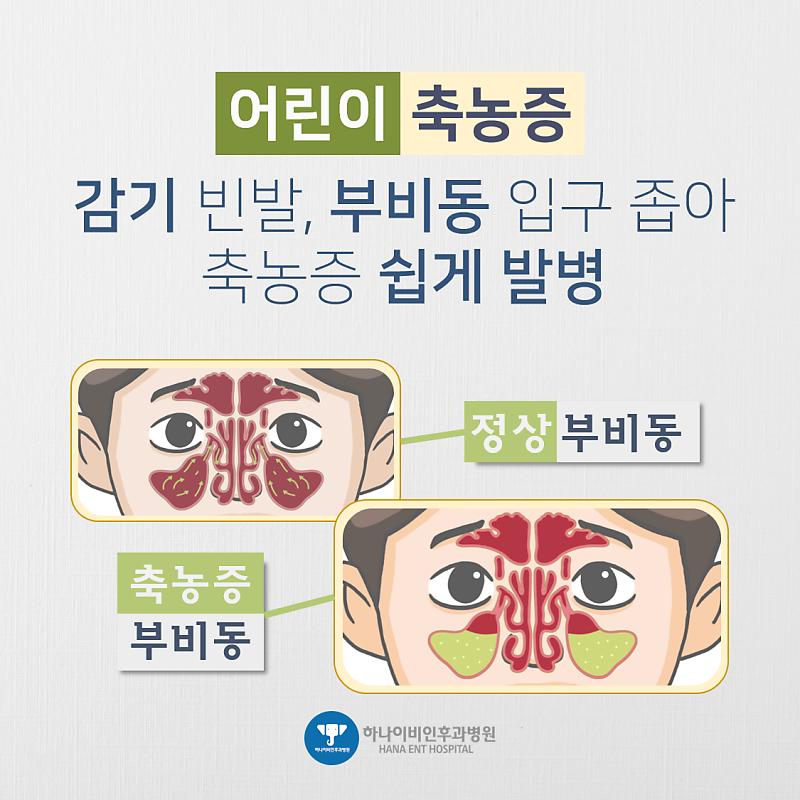for children’s peaceful breathingThe empyema that appeared in children could have been caused by rhinitis or phobia. This caused discomfort in the nose and surrounding areas of the face due to inflammation of the sinuses. It was mainly caused by bacteria and viruses. Children, especially when they have underlying diseases such as rhinitis or phobia, empyema occurred more frequently. Symptoms included stuffy nose, sore nose, headache, fever, and fatigue. These symptoms caused inconvenience to children’s daily lives and affected their sleep and diet. The empyema could have become chronic if sustained without proper management. empyema found in childrenChildhood empyema usually occurred more frequently in infancy and childhood. Infection occurred more frequently in infancy because the sinuses were still developing. In particular, infants between 6 months and 6 years old were affected a lot. During this period, infants’ immune systems were still immature, and they were more susceptible to infections due to epidemics and viruses. Also, empyema occurred frequently in childhood. In particular, children aged 6 to 12 were more affected by empyema. This made it easier for children to spread the infection because they had close contact with other children at school or kindergarten. timing and age group of empyemaThe causes of sputum in childhood empyema varied. Infection by viruses and bacteria was the main cause. In addition, underlying diseases such as allergies and rhinitis were also factors that caused empyema. The allergic reaction caused inflammation of the nose and sinuses, causing infectious diseases. Other environmental and genetic factors also affected the occurrence of empyema. In particular, fine dust and mold in the air could be factors that could cause sinus infection. Therefore, childhood empyema was caused by a combination of various factors such as infection, allergic reaction, and environmental factors caused by various viruses and bacteria. cause of childhood empyemaThe symptoms of childhood empyema appeared mainly in the nose and face areas. First, there was nasal congestion and phlegm of nasal secretion or empyema. Nose congestion was a symptom of stuffy nose and difficulty breathing, and nasal secretion was a symptom of mucus and rust. Also, there was pressure and pain in the nose. These symptoms appeared with headaches, dizziness, and pain in the eyeball area. I also had a fever and a feeling of fatigue. These symptoms caused inconvenience to daily life and affected sleep and diet. Often, these symptoms could reduce children’s activity and change their mood and behavior. symptom of childhood empyemaPediatric sinuses played an important role in the respiratory system. First of all, the sinuses guided the air to the nose and organs to keep it warm and moist to facilitate breathing. In addition, the sinuses filtered dust and bacteria contained in the air to protect the body from various harmful substances. The proper operation of the sinus cavity helped prevent the occurrence of respiratory diseases. The sinuses also contributed to strengthening immunity. Immune cells in the sinuses played a role in defending the body against infection. These immune cells helped control inflammation of the sinuses caused by infection and repair the body. Children’s sinus function and immunitySputum in childhood empyema affected growth and development. First of all, chronic nasal congestion and dyspnea caused by empyema prevented proper oxygen supply and reduced sleep quality. This could reduce children’s appetite and reduce nutrient absorption. In particular, chronic sinusitis could have become more serious because the symptoms last longer than acute sinusitis. Therefore, empyema could have a negative effect on children’s growth and development. In addition, symptoms caused by empyema reduced children’s activity and caused inconvenience in their daily lives. childhood empyema and growth problemsThere were many advantages to managing the sputum of childhood empyema with Chinese medicine. First of all, herbal medicine was able to relieve symptoms of empyema using natural ingredients. In particular, herbal medicine helped calm inflammation of the sinuses and strengthen immunity. In addition, the number of additional problems with herbal medicine decreased, so I was relieved even if I took it for a long time. In addition, herbal medicines could be prescribed appropriately depending on the cause of empyema. For example, when you have a fever or a runny nose, it helped you get better. In addition, herbal medicine has eased the symptoms of sinusitis and improved the overall health of children. Management and Benefits of Chinese Medicine for Children’s PusillosisThe way to prevent childhood empyema was to wash your hands regularly. The hands were important to prevent the spread of bacteria and viruses. Vaccination also helped prevent empyema. In particular, pneumococcal and influenza vaccines were able to prevent some bacteria and viruses that cause empyema. It was also important to be careful not to let children near smokers. Cigarette smoke was able to promote the development of empyema. It was also important to maintain proper ventilation and live in a clear air environment. Keeping children warm and healthy eating habits also helped prevent empyema.The way to prevent childhood empyema was to wash your hands regularly. The hands were important to prevent the spread of bacteria and viruses. Vaccination also helped prevent empyema. In particular, pneumococcal and influenza vaccines were able to prevent some bacteria and viruses that cause empyema. It was also important to be careful not to let children near smokers. Cigarette smoke was able to promote the development of empyema. It was also important to maintain proper ventilation and live in a clear air environment. Keeping children warm and healthy eating habits also helped prevent empyema.Previous image Next imagePrevious image Next imageHere’s the previous image. Here’s the next oneHere’s the previous image. Here’s the next oneHere’s the previous image. Here’s the next oneHere’s the previous image. Here’s the next oneHere’s the previous image. Here’s the next one

